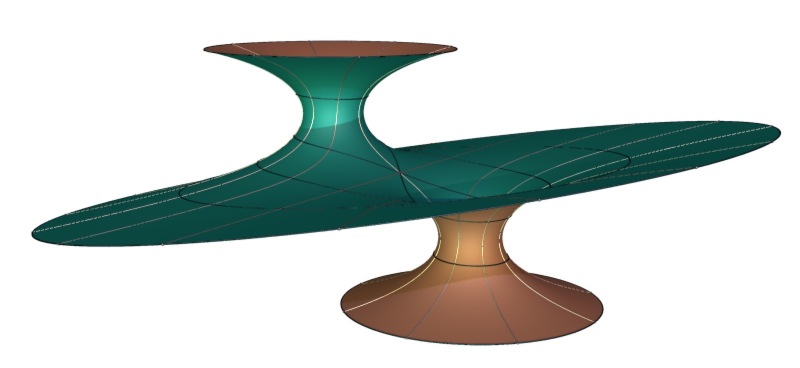One of the standard examples of a failed minimal surface construction is the Finite Riemann surface, named in reference to the rather successful infinite Riemann minimal surface

The attempt was to make an embedded minimal sphere with 3 ends. Two ends is easy: the catenoid will do. If you want more, the ends can only be catenoidal or planar, and the catenoidal ends need to point in the same direction, i.e. have the same limiting normal. Such a sphere will always have what is called vertical flux, which is disastrous in its usefulness.

Whenever you have vertical flux, you can deform the minimal surface in a very simple way, keeping the catenoidal ends vertical but tilting non-horizontal planar ends like above. This is nice but also disastrous because it allows to prove that embedded surface of this sort cannot exist.

This is a famous theorem by Francisco José Lópe and Antonio Ros. The proof consists of three steps: If the surface is embedded, its stays embedded for all parameter values of the deformation. Secondly, if such a surface has either a planar end or a finite point with vertical normal, it cannot stay embedded. These two steps imply that such a surface can only have catenoidal ends and no points with vertical normal. Being a sphere then implies that there can only two ends, and we have the catenoid.

It is amusing to make more examples of surfaces with vertical flux. Above are single periodic versions with vertical catenoidal and annular ends. The first one feels a little bit embedded because the only intersections that happen are those of a catenoidal end with a translational copy, and I am inclined not to count that.
